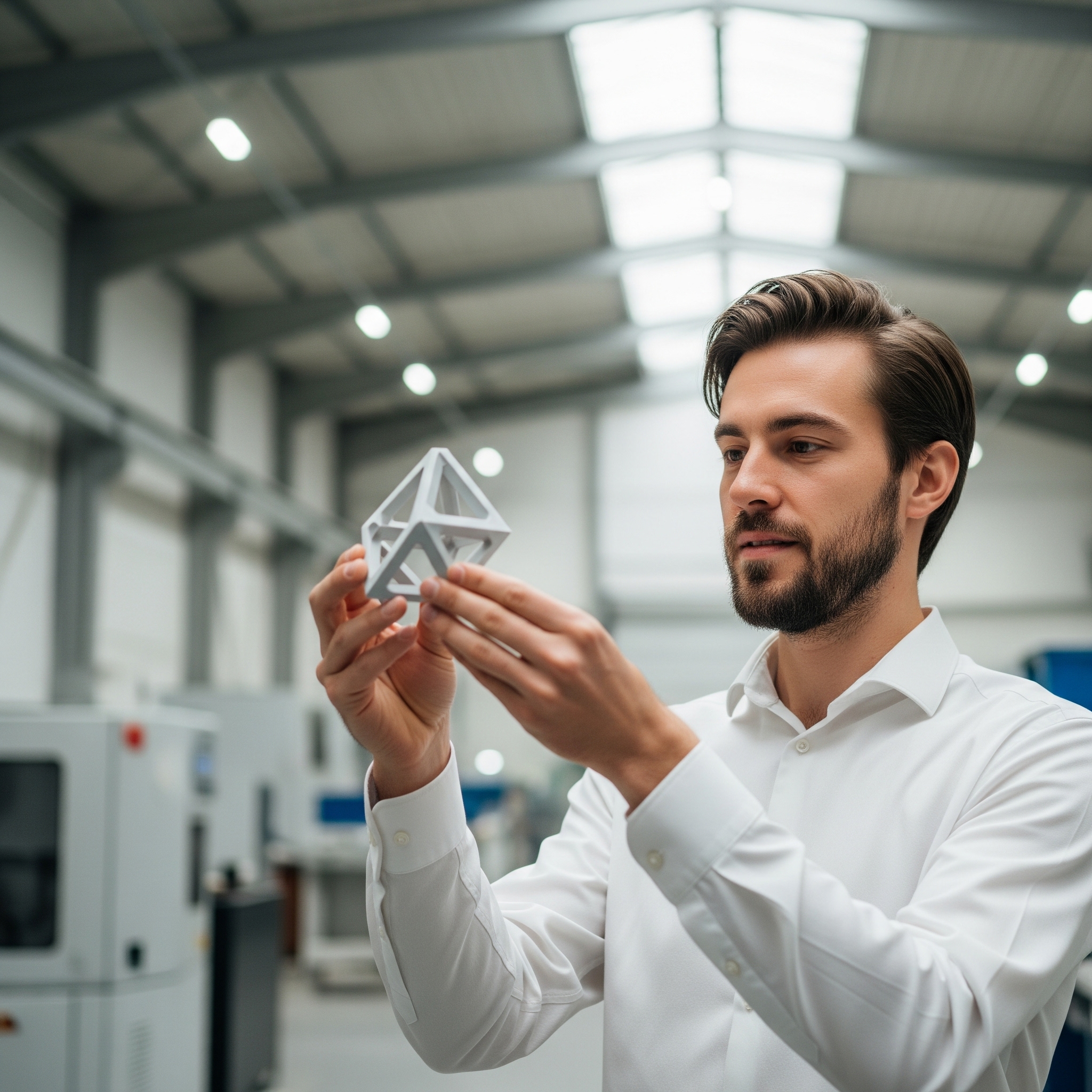3D printing refers to the layer-by-layer creation of a three-dimensional object from a digital model. Unlike traditional subtractive methods (e.g., milling, drilling), where material is removed, 3D printing builds material additively — hence the term Additive Manufacturing (AM).
The basis is always a digital 3D model, usually in STL, OBJ, or STEP format. Software slices the model into thin horizontal layers (“slicing”), which the printer then builds up one by one.
Overview of the Most Important 3D Printing Methods
There are various 3D printing methods, which differ especially in the type of material, energy source, and level of detail. The most common industrial methods are:
- Fused Deposition Modeling (FDM) / Fused Filament Fabrication (FFF)
Material: Thermoplastic polymers (e.g., PLA, ABS, PETG)
How it works: A plastic filament is heated, extruded through a nozzle, and deposited layer by layer.
Advantages: Cost-effective, widely accessible, ideal for prototypes
Limitations: Lower surface finish and dimensional accuracy compared to other methods - Stereolithography (SLA)
Material: Photopolymers (liquid resins)
How it works: A UV laser selectively cures resin layers.
Advantages: Very high detail accuracy and smooth surfaces
Applications: Dental technology, jewelry design, highly precise models - Digital Light Processing (DLP)
Material: Photopolymer resins
How it works: A light source (e.g., DLP projector) cures entire layers at once.
Advantages: Faster than SLA with similar quality
Typical uses: Small batch production, biomedical models - Selective Laser Sintering (SLS)
Material: Plastic powder bed (e.g., PA12, TPU)
How it works: A laser selectively fuses plastic particles layer by layer.
Advantages: High strength, no support structures needed
Applications: Functional prototypes, end-use parts, small series production - Selective Laser Melting (SLM) / Direct Metal Laser Sintering (DMLS)
Material: Metal powders (e.g., aluminum, stainless steel, titanium)
How it works: A high-power laser fully melts metal powder layer by layer.
Advantages: Production of fully functional metal parts
Industrial use: Aerospace, medical technology, automotive industry - Binder Jetting
Material: Sand, metal, ceramics
How it works: A binding agent is applied to a powder bed to join particles, followed by thermal post-processing.
Advantages: High speed, suitable for large parts
Typical applications: Architectural models, tooling, series production
Applications of 3D Printing
3D printing is used today across almost all industries. Its strengths lie in customization, rapid design iteration, complex geometries, and tool-free manufacturing.
Key application fields include:
-
Medical technology: Prosthetics, dental implants, patient-specific surgical models
-
Aerospace: Lightweight components, functional parts with internal channels
-
Automotive: Design prototypes, mounts, small series parts
-
Mechanical engineering: Tools, fixtures, functional components
-
Architecture & design: Model making, furniture prototypes, art objects
-
Consumer goods: Customized products, accessories, sports equipment
Advantages and Challenges
Advantages:
-
Rapid realization of ideas (rapid prototyping)
-
Minimal material waste
-
Complex geometries without tooling costs
-
Customization without extra costs
Challenges:
-
Slower production for large quantities
-
Limited material variety (depending on process)
-
Post-processing often required
-
High investment costs for industrial systems
Conclusion: A Future Technology with Massive Potential
3D printing is far more than a trend — it has become a fundamental part of modern manufacturing. The technology enables new ways of thinking: about design freedom, efficiency, and sustainable production models. From one-off items to series production, 3D printing opens new horizons.
AM Worx GmbH is passionately committed to additive manufacturing and technical expertise. As your partner for demanding 3D printing solutions, we support our customers in producing functional, precise, and cost-effective parts — from the first prototype to series production.
